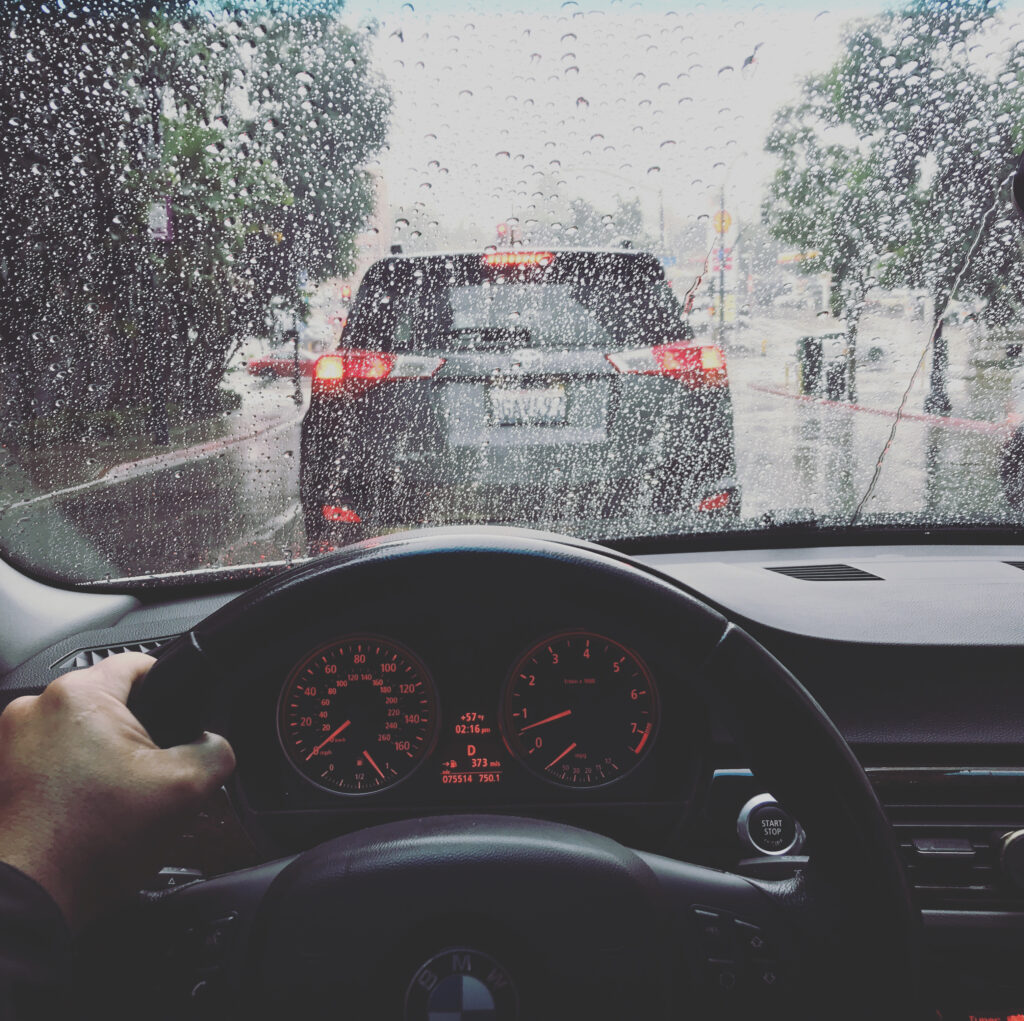
Bad weather can be a recipe for disaster on Texas roads, resulting in reduced visibility, slick streets, flooded crossings, fallen trees, and other hazards. Knowing what to do when you’re driving in the rain or other dangerous conditions can reduce the chances of a weather-related crash and potentially save lives.
At KRW Lawyers, our attorneys see the devastating impact of car accidents every day. We want you to stay safe. Keep reading for tips on driving in inclement weather.
How To Drive In Thunderstorms and Heavy Rain
Avoid driving in a thunderstorm if you can. Postpone your trip, if possible. If you must travel, give yourself plenty of time to get to your destination.
Remember that storms are unpredictable. What starts as a steady shower might turn into driving rain that makes visibility impossible. Pull over to a safe spot until conditions improve. You should also consider alternative routes if your usual way is prone to flooding.
When driving in a storm, always turn on your headlights. You can also use your hazard lights to improve your visibility in heavy rain. Reduce your speed, and leave extra space between your car and other vehicles in case you need to stop suddenly. If you fail to slow down to take slippery roads into account, you risk hydroplaning and colliding into neighboring vehicles.
Strong winds often accompany thunderstorms. Driving in high winds, especially when there are strong gusts, can destabilize the vehicle. Keep control of your car by slowing down and scanning the road for debris that might fly in your path.
Am I Safe From Lightning In My Car?
In general, you are safe from lightning while in your car. When lightning strikes a vehicle, its metal framework is designed to absorb the electrical current and direct it around the car’s shell and into the ground. As long as you’ve got your windows up and remain in the vehicle, you should be safe.
However, some types of vehicles, such as convertibles, may put motorists and passengers at greater risk due to having open tops. Although occupants may not be struck, the car may be more likely to catch fire if hit by lightning.
How To Drive Through Flood Water
When driving after heavy rain, you may encounter flooding. If you come upon floodwater, the best option is to turn around and find an alternate route to your destination. Even if the standing water seems shallow, driving through it could damage or disable your vehicle.
If you have no choice but to drive through floodwaters, you should first determine how deep the water is. Find something you can use to gauge the depth of the water. If the water is deeper than a foot or two, it could potentially cause your car to float, especially if the water is moving.
If you think it is safe to drive through the water, proceed at a consistent but slow speed of three to four miles per hour. By moving slowly, you will protect your engine from flooding. As soon as you have emerged from the water, you should dry the vehicle’s brakes. To clear the brakes, lightly press the brake pedal while moving ahead slowly.
Contact KRW Lawyers If You Were A Victim While Driving in The Rain In San Antonio, Texas
If you were hurt in a crash caused by a reckless driver, contact a San Antonio car accident lawyer at KRW Lawyers right away. We fight for the rights of those who’ve been injured through no fault of their own. You can count on us to build a strong case that pushes for maximum compensation and justice for you. Call or contact us today for a free consultation.
